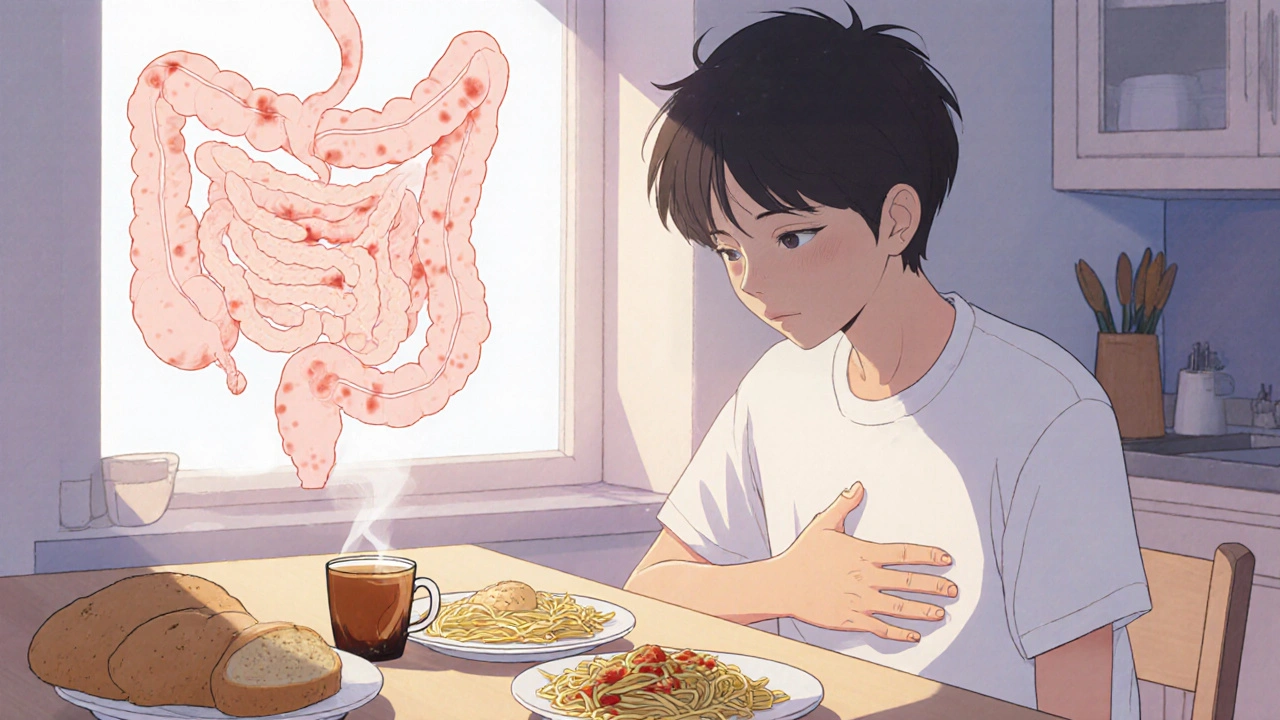Gluten Intolerance: Symptoms, Diagnosis, and What to Eat Instead
When you eat bread, pasta, or cereal and feel bloated, tired, or achy afterward, you might be dealing with gluten intolerance, a condition where the body reacts negatively to gluten, a protein found in wheat, barley, and rye. Also known as non-celiac gluten sensitivity, it’s not an allergy or autoimmune disease like celiac disease—but it still causes real, disruptive symptoms. Unlike celiac disease, which damages the small intestine, gluten intolerance doesn’t leave visible scars, but that doesn’t make it any less painful. Thousands of people live with it without knowing why—mistaking their symptoms for irritable bowel syndrome, stress, or just bad digestion.
People with gluten intolerance often report brain fog, joint pain, headaches, and skin rashes—not just stomach issues. And while celiac disease, a genetic autoimmune disorder triggered by gluten that destroys the lining of the gut affects about 1% of the population, gluten intolerance may be three to six times more common. The tricky part? There’s no blood test or biopsy to confirm it. Doctors rule out celiac disease and wheat allergy first, then suggest a strict gluten-free trial. If symptoms improve, it’s likely gluten intolerance. wheat allergy, a separate immune reaction to proteins in wheat that can cause hives, swelling, or even anaphylaxis is different too—it shows up fast, often within minutes, and involves IgE antibodies.
Managing gluten intolerance isn’t about perfection—it’s about awareness. You don’t need to avoid every trace of gluten like someone with celiac disease, but you do need to cut out obvious sources: bread, pasta, beer, soy sauce, and processed snacks. Hidden gluten hides in soups, salad dressings, and even some vitamins. Reading labels becomes second nature. The good news? Gluten-free options are everywhere now—from oatmeal and rice noodles to almond flour pancakes. Many people feel better within days of switching. And if you’re unsure whether gluten is the problem, a simple elimination diet can give you answers without expensive tests.
What you’ll find in the posts below are real, practical guides on how to live with gluten intolerance—what to eat, what to avoid, how to read labels, and how to tell if your symptoms are really from gluten or something else. No fluff. No marketing. Just clear, tested advice from people who’ve been there.
Crohn's Disease and Gluten Intolerance: Key Signs and What to Watch For
Explore the link between Crohn's disease and gluten intolerance, learn warning signs, testing methods, and dietary steps to manage symptoms effectively.
